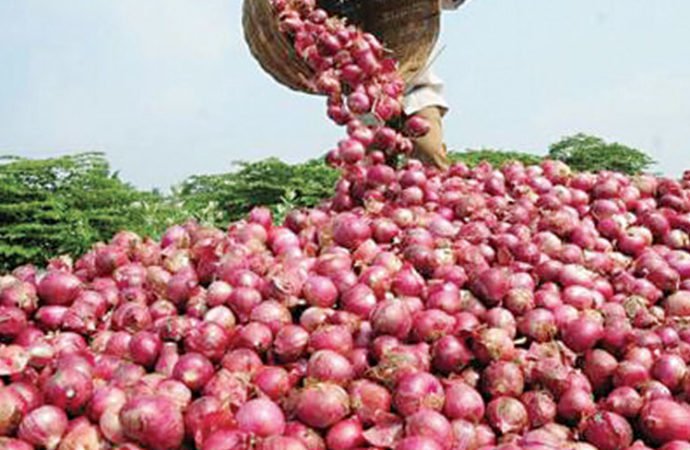
Vietnam has outperformed Bangladesh and emerged as the second-most important exporter of apparel in the global market in 2020. Should Bangladesh be concerned by this? What signals does this transmit for the medium-term prospects of Bangladesh’s export-oriented apparel sector?
The recently published WTO Trade Statistical Review 2021 revealed that Vietnam ranked second in terms of export earnings from apparel in 2020, pushing Bangladesh to the third position. Bangladesh’s share in the global apparel market has come down to 6.3 percent in 2020 from 6.8 percent in 2019, whilst that of Vietnam has gone up from 6.2 percent to 6.4 percent over the corresponding period.
However, this should not come as a surprise. Since 2010, Vietnam has been moving strategically to consolidate its position in the global apparel market. Key elements of this strategy included moving up the value chain, and product and market diversification, implemented through targeted policy interventions and actions—and the country has achieved impressive success in pursuing this over the past decade. Vietnam’s emphasis on productivity and skills enhancement, and on intra-and extra-apparel diversification, has meant that it has been able to reduce its dependence on apparel while also significantly raising its earnings from apparel exports. The apparel sector in 2020 accounted for about one-fourth of the country’s total export earnings of USD 281.4 billion, whereas in Bangladesh, apparel counted for more than four-fifths of total exports of USD 42 billion. Higher productivity and better prices have also allowed the country to pass some of the benefits from entrepreneurs to workers in the form of higher wages. Average wage in Vietnam’s apparel sector is about 1.5 times more than that of Bangladesh.
The above should nonetheless be considered with a caveat—2020 was no normal year. The world merchandise trade in 2020 dipped by eight percent compared to 2019, with global apparel exports coming down by about nine percent. Both Bangladesh and Vietnam experienced falls in export earnings, by 15 percent and seven percent respectively. A large number of enterprises in Bangladesh had to suffer frequent stoppages in production during April to June, 2020. Orders were cancelled, leading to loss of potential export earnings, and significant discounts were asked for, resulting in lower export earnings. Some of the orders that required relatively short lead time were shifted to enterprises in Vietnam, since during this time, enterprises there were operating in full swing. It took some months for Bangladesh’s RMG sector to revert back to pre-pandemic levels of production.
As Bangladesh started to recover from the worst impacts of the first wave of the pandemic, towards the end of 2020, the situation gradually got better and orders started to pick up. Over the past few months of 2021, enterprises in Bangladesh have been receiving more orders from major brands and buyers. The situation has indeed been reversed—because of the resurgence of Covid-19 in Vietnam and its adverse impacts on the economy, some of its orders are being shifted to Bangladesh. Consequently, it is highly plausible that Bangladesh will be able to supersede Vietnam in 2021 and regain its ranking as the second largest exporter of apparel in the global market, a position that it had held for more than a decade.
The question is, should Bangladesh be complacent in view of this likely outcome in 2021? In the context of the above mentioned fluctuating fortunes of the apparel sector, the issue that merits serious assessment is whether Bangladesh will be able to sustain the momentum of the past years over the medium-term future, and whether it will be able to consolidate its position as the second largest exporter of apparel by withstanding the increasing competitive pressure from Vietnam, as well as other challengers like India, Cambodia and Turkey, which are competing in some of the same market segments.
Vietnam’s global export market share in 2010 was about 2.9 percent, when the same for Bangladesh was about 4.2 percent. Since then, Vietnam has been able to post an average growth of 11 percent as against that of about seven percent for Bangladesh. Thus, the recent performance of Vietnam did not emerge out of the blue; success was built over the years, by creating and expanding on a number of advantages. Almost three-fourths of Vietnam’s apparel destined for the global market is produced by foreign companies, with close ties with foreign buyers, brands and markets. This has allowed the enterprises to be more tuned in to the shifting demand structure of the global apparel market. One example of this is the structural change in the supply capacity of non-cotton-based apparel. Vietnam’s apparel exports are increasingly being dominated by manmade fibre-based items, export of which is experiencing a relatively faster rise in the global market. Vietnam is also gradually moving into fashion and design-based components of the market where prices are higher and domestic value addition is larger. Its emphasis on development of backward-linkage textile sector, complemented by connectivity with foreign direct investment (FDI) driven forward linkages, provides its apparel sector an added advantage. One issue that is not given due attention, but should merit consideration, concerns net domestic value addition from the export of apparel. Strong backward and forward linkages have meant that domestic value addition in Vietnam has been on the rise in recent years.
What is also to be noted in this connection is that over the past years, Vietnam has been quite aggressively pursuing bilateral and regional trade agreements. These will provide the country preferential market access in the EU thanks to the Vietnam-EU Free Trade Agreement, in the Canadian market by taking advantage of the Comprehensive and Progressive Trans-Pacific Partnership (CPTPP), and in the markets of Japan, Australia and China on account of being a member of the recently concluded Regional Comprehensive Economic Partnership (RCEP). All these will provide Vietnam with a significant competitive edge over Bangladesh, particularly in view of Bangladesh losing preferential market access as a result of its graduation from the LDC group in 2026 (the EU preferential access will continue till 2029).
However, Bangladesh has the potential capacity to compete with Vietnam from a position of strength if the required homework is carried out in full measure during the run-up to LDC graduation over the next five years. Over the past years, Bangladesh’s apparel entrepreneurs and workers have demonstrated their capacity to learn and grow in the highly competitive global apparel market. This is owed no less to the policy and financial support provided by successive governments. For many brands and buyers, when they say “China plus one”, they consider Bangladesh as the “plus one” country for purposes of sourcing. However, in order to take advantage of this, a renewed effort must be made to improve Bangladesh’s performance in several areas.
Bangladesh will need to build industrial parks and RMG clusters with common services and required infrastructure. Policies must be geared to encourage changes at the enterprise level, in such areas as technological upgradation and adoption of advanced technologies, improvements in managerial and management capacities, skills enhancement and raising of productivity. Since many services are embedded in merchandise trade, quality of services, including financial services and digital platform-based services, ought to also be significantly improved as part of raising overall competitiveness of the apparel sector. A time-bound structural shift to cater to the fast growing non-cotton segment of the market must be taken through appropriate changes in the incentive structure and with assistance from funds.
While one of the key strengths of Bangladesh’s export-oriented apparel sector is that it has been overwhelmingly a domestic entrepreneurship-driven sector, going forward, Bangladesh should take necessary steps to attract more FDI. A number of initiatives are being taken now in this respect, including establishment of special economic zones. These need to be significantly fast-tracked. To note, FDI flow to Bangladesh was USD 3.6 billion and USD 1.6 billion in the pre-pandemic years of 2018 and 2019 respectively, compared to USD 16.1 billion and USD 15.5 billion for Vietnam. Keeping in mind the upcoming LDC graduation, with consequent loss of preferences for exports, including for apparel, Bangladesh should, as has been the case with Vietnam, aggressively pursue the goal of signing FTAs and Closer Economic Partnership Agreements (CEPAs) with important trading partners. There should be a focus on developing production networks and value chains with regional partners, and with important trading partners such as Canada, Japan and others bilaterally, and also possibly with RCEP, to ensure preferential market access. These will enable Bangladesh to opt for both product diversification and market diversification in RMG. However, this will call for careful preparation, domestic policy reforms, and formidable negotiating skills since, unlike the case for LDCs, such partnerships will entail significant measures of reciprocity and exchange of both offer and request lists.
Bangladesh does have the capacity to face the growing competitive pressure and emerging challenges in the global apparel market, from Vietnam and others, if the past performance of our export-oriented apparel sector is anything to go by. However, at the same time, one should also concede that the future is not going to be a mere progression of the past. It will be what we make of it.
Professor Mustafizur Rahman is Distinguished Fellow at the Centre for Policy Dialogue (CPD).


 For all latest news, follow The Daily Star’s Google News channel.
For all latest news, follow The Daily Star’s Google News channel. 







